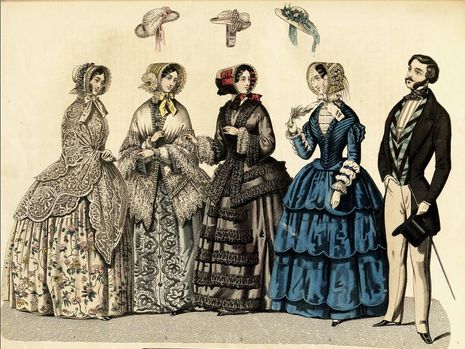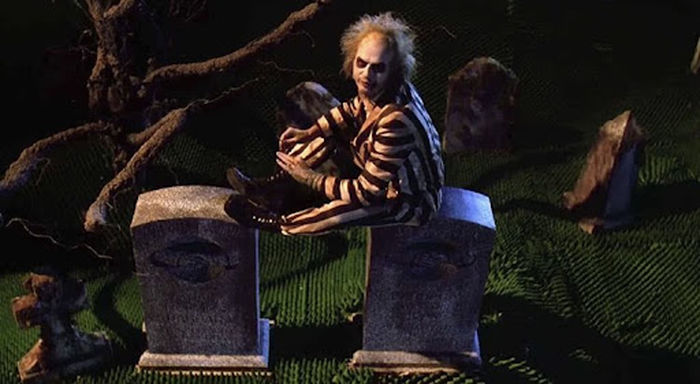Historical accuracy vs creative liberty: an analysis of Little Women’s costume design
Fashion Columnist, Sarah Abbas, gives us her criticism on the 1860s fashion of Little Women

Resonating with every generation since its release, Little Women saw a brand new remake in 2019. A story of four sisters — Meg, Jo, Beth and Amy March — Louisa May Alcott’s beloved tale reads as an autobiographical depiction of her own adolescence: navigating the transition from childhood to adulthood. Greta Gerwig’s retelling of this narrative gives a new spin to the classic.
Jacqueline Durran, the costume designer, commented on her intentions for the 2019 retelling. With the story being set in 1860-1870 Massachusetts, Durran claimed to have sacrificed some historical accuracy to better mirror the characters, aiming to reflect their personalities through the clothing. She stated: ‘I tried to make things period-accurate, so that the clothing exists properly within a period — but letting the girls wear it how they wanted.’ Despite this objective, a number of her fashion choices deviate away from the look of the time and make little sense for the March sisters.
“A crime I cannot overlook is Durran dressing Amy March, the youngest sister, in Uggs”
Durran dresses each sister in her own colour palette: Meg in green and lavender, Jo in red, Beth in earthy brown and Amy in blue. Although this is a nice detail, the impact doesn’t quite translate as intended. Factoring in the time period and the economic status of the March family, it is out of the question that each sister would own several dresses in a colour specific to her. The 1994 version shows the sister’s sharing their clothes; we see Amy wearing a hand-me-down from Meg in the later scenes. This creates an immersive realism. It is puzzling that Durran doesn’t reuse pieces for all the sisters considering she voiced that they ‘reused things in different combinations’. Minus Jo and Laurie exchanging the odd shirt or waist coat, the rest of the March sisters have completely custom made wardrobes.
Meg
Being the eldest of the four sisters, Meg March displays the typical characteristics of women in the 1860s. Concerned with how she is perceived and her social standing amongst her peers, we would expect Meg to align herself with the latest trends. 1860s Massachusetts was notorious for the hoop skirt, and this was key to the silhouette of this era. Made of steel hoops, these contraptions gave a wide appearance to skirts and dresses. Being both affordable and simultaneously eliminating the need for heavy petticoats, the hoop skirt was widely worn throughout society, regardless of social class. This silhouette gradually slimmed down by the end of the 1860s, and the 70s saw the end of the hoop skirt. Meg, along with the rest of the sisters, fails to adopt the hoop skirt in the 2019 retelling. Additionally, many of the clothes were constructed from cotton, which Durran said she used instead of silk and more expensive fabrics in order to convey the Marchs’ poverty. However, Little Women is set in the Civil War, and during this time, cotton was incredibly expensive in the North, thus, they would not have been in a financial position to be able to afford such materials and would’ve utilised wool or linen instead. An inconsistency between intention and execution.
A scene that the 1994 version nailed was Meg’s debut at Sally Moffat’s ball, her dress being a clear rejection of the modesty instilled in her in attempts to assimilate with high society. Slightly off the shoulder with a V-neck line, the 90s dress gave both accuracy and served the plot. 2019 did not see such success. Meg’s prom-like pink dress ended up being the most conservative outfit there.
Amy
A crime I cannot overlook is Durran dressing Amy March, the youngest sister, in Uggs. How they slipped in the costume design 120 years too early is a mystery to me. Another choice that came a century too early were the hairstyles for all the sisters. From the side parts, to the refusal to put it up, to the 2010-esque side ponytail to the lack of bonnets, the inaccuracies in the film’s hair styling are indefensible.
“Poetry and art run through his veins and seep into his exterior”
Jo
Unlike the other March sisters, I can forgive and forget all the historical inaccuracies in Jo’s costume design. Based on Louisa May Alcott herself, Jo is reckless and daring, not concerned with social expectations. The inaccuracies drive a higher purpose. A detail I especially liked was the interchangeable outfits worn by Jo and Laurie. Considering their closeness, it makes sense that they would exchange clothes on a regular basis.
Laurie
Theodore Laurence, our resident love interest for this motion picture, wears hanging white sleeves and sports floppy hair. Even before he speaks, these choices act as a visual cue, giving the audience insight into his character. He is a romantic. Poetry and art run through his veins and seep into his exterior.
Period films always follow an identical dilemma: is historical accuracy vital or can it be sacrificed for creative liberty? On the one hand, accurate costume design contributes to the realism of the film, allowing the audience to become fully immersed in the story. Equally, alterations to the authentic design may be needed to achieve the vision and style of the director and costume designer. Still, Little Women fails to achieve the bulk of the intention behind its clothing decisions, leaving the creative liberty argument futile. Nonetheless, for those without a penchant for 1860s fashion, Gerwig’s clever storytelling and Timothée Chalamet’s spotless romanticism is enough to counterbalance the questionable costume design.
 Comment / Plastic pubs: the problem with Cambridge alehouses 5 January 2026
Comment / Plastic pubs: the problem with Cambridge alehouses 5 January 2026 News / Cambridge businesses concerned infrastructure delays will hurt growth5 January 2026
News / Cambridge businesses concerned infrastructure delays will hurt growth5 January 2026 News / New movement ‘Cambridge is Chopped’ launched to fight against hate crime7 January 2026
News / New movement ‘Cambridge is Chopped’ launched to fight against hate crime7 January 2026 News / Uni-linked firms rank among Cambridgeshire’s largest7 January 2026
News / Uni-linked firms rank among Cambridgeshire’s largest7 January 2026 News / AstraZeneca sues for £32 million over faulty construction at Cambridge Campus31 December 2025
News / AstraZeneca sues for £32 million over faulty construction at Cambridge Campus31 December 2025










